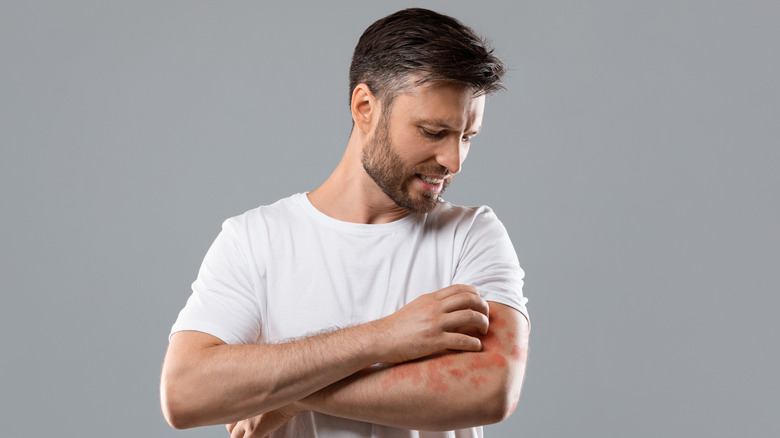If You Notice This On Your Skin, It Could Be A Sign Of A Heart Infection
Your skin is the first line of defense for keeping your body healthy. At first glance, there may not seem to be much connection between your heart and the skin that you're in. However, changes in your skin may be the first sign that there's trouble with your ticker. Fortunately, some of these signs are pretty apparent.
Although severe heart infection is rare in most cases, the prevalence of heart infection has increased among certain populations. A 2020 study published in Circulation revealed that the incidence of endocarditis, a heart infection that occurs when the heart is exposed to bacteria, viruses, or fungi, has doubled among the elderly population. The inflammation from a heart infection can cause damage to any part of the heart. Pericarditis is inflammation of the heart's outer surface, endocarditis is inflammation of the heart valve lining, and myocarditis is inflammation of the heart's muscles, according to the Cleveland Clinic.
What your skin may be telling you about your heart
It may be tempting to ignore something on your skin, especially if it isn't painful. However, skin changes should not be taken lightly if due to a heart infection. A 2021 case study in the European Heart Journal concluded that the presence of skin lesions indicated a higher rate of complications and worse prognoses in patients with infective endocarditis.
Signs of heart infection can show up on areas of the skin far away from the left side of the chest. Janeway lesions are red or brown spots that can appear on the palms and soles of someone with a heart infection (via American Academy of Dermatology Association). Janeway lesions are usually a sign of an acute heart infection. The lesions are painless and usually disappear on their own in a few days or weeks.
Unlike Janeway lesions, Osler nodes are very painful. If you have a heart infection, Osler nodes are lumps that can appear on your fingers, toes, or both. If you have a heart infection, petechiae are tiny purple or red spots that can be seen anywhere on the skin — even on the whites of your eyes (via Mayo Clinic).
Skin changes could be the first clue for you and your doctor about your health. Immediately report any changes in your skin to your doctor, even if they are painless or have disappeared.


